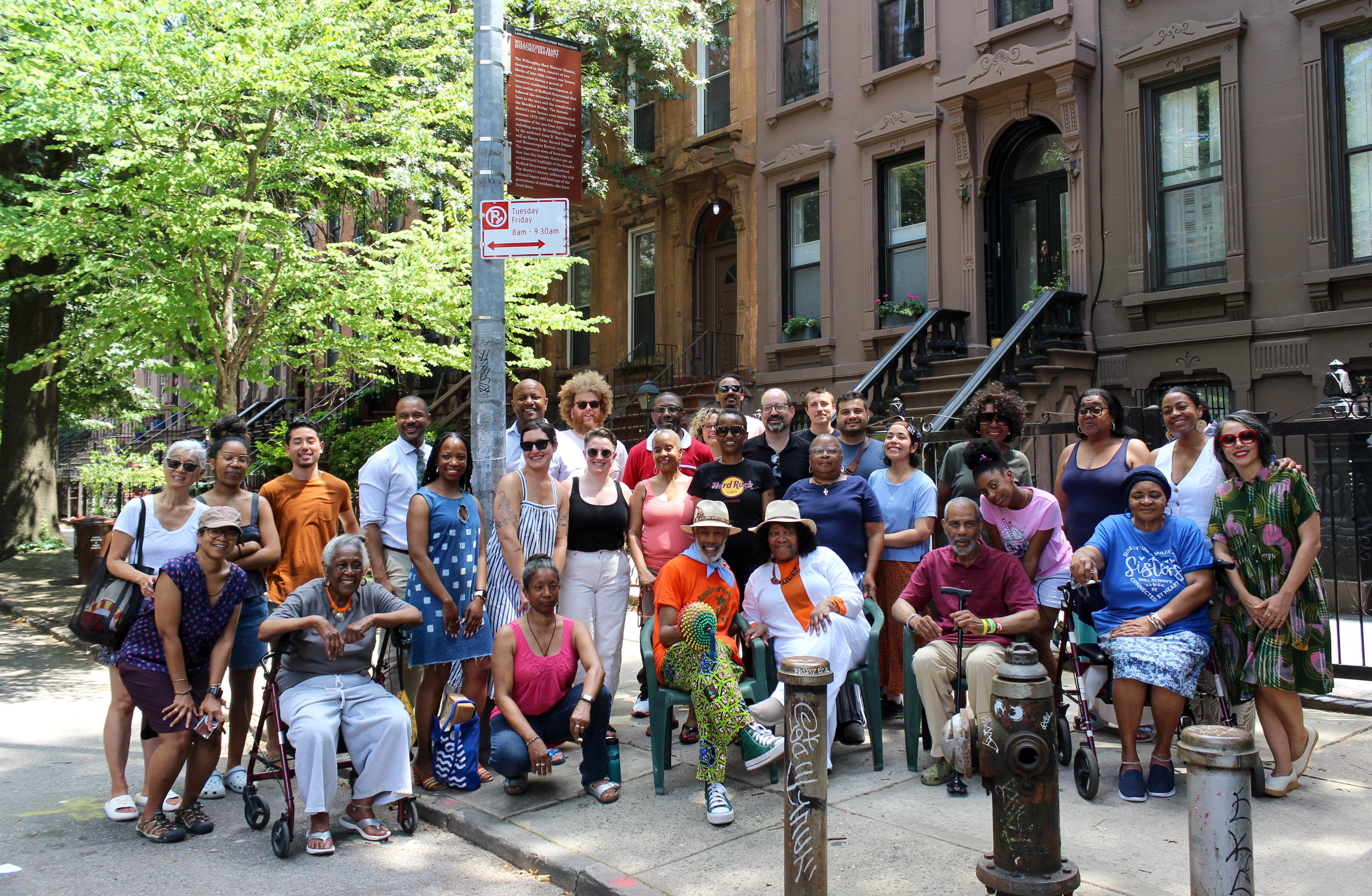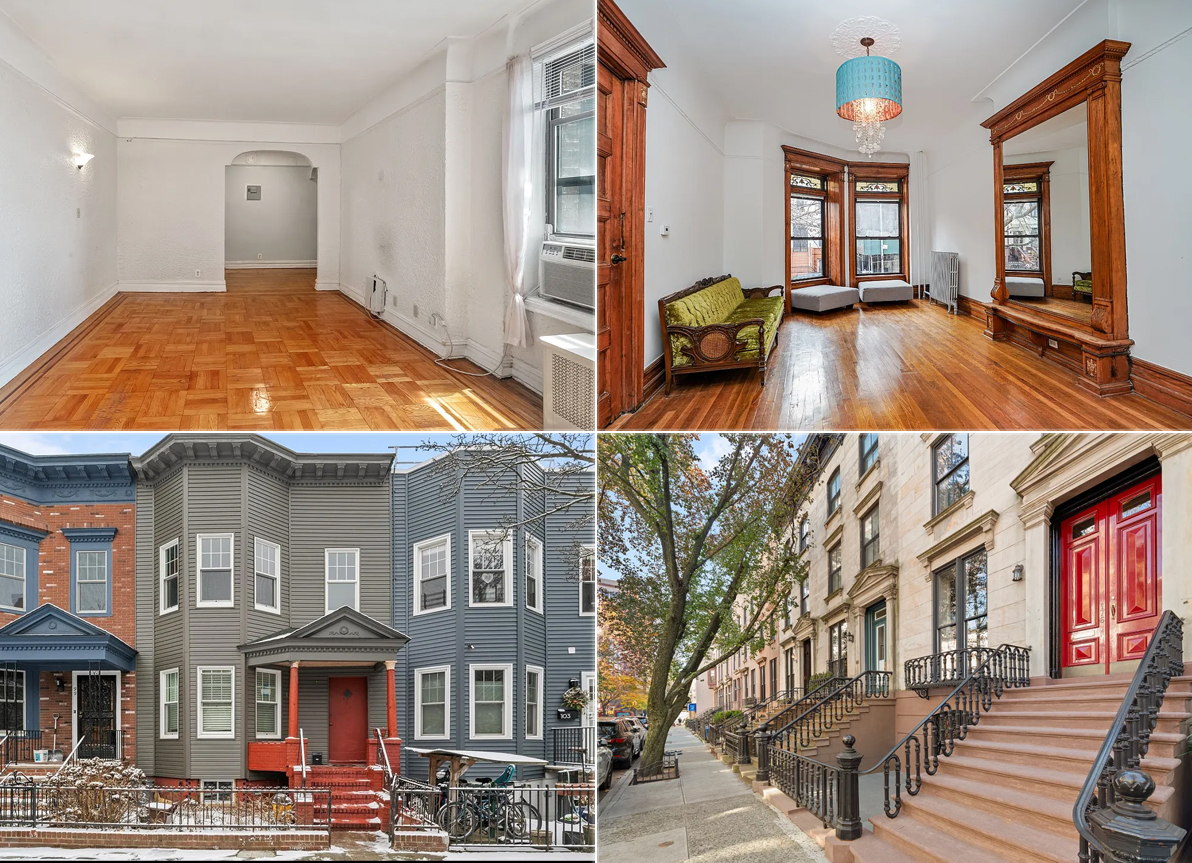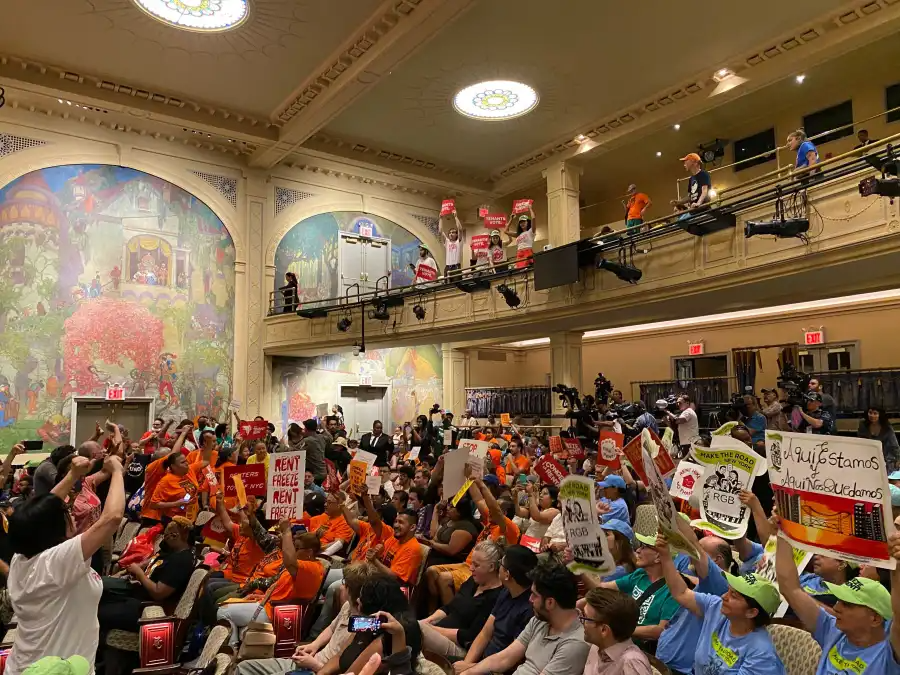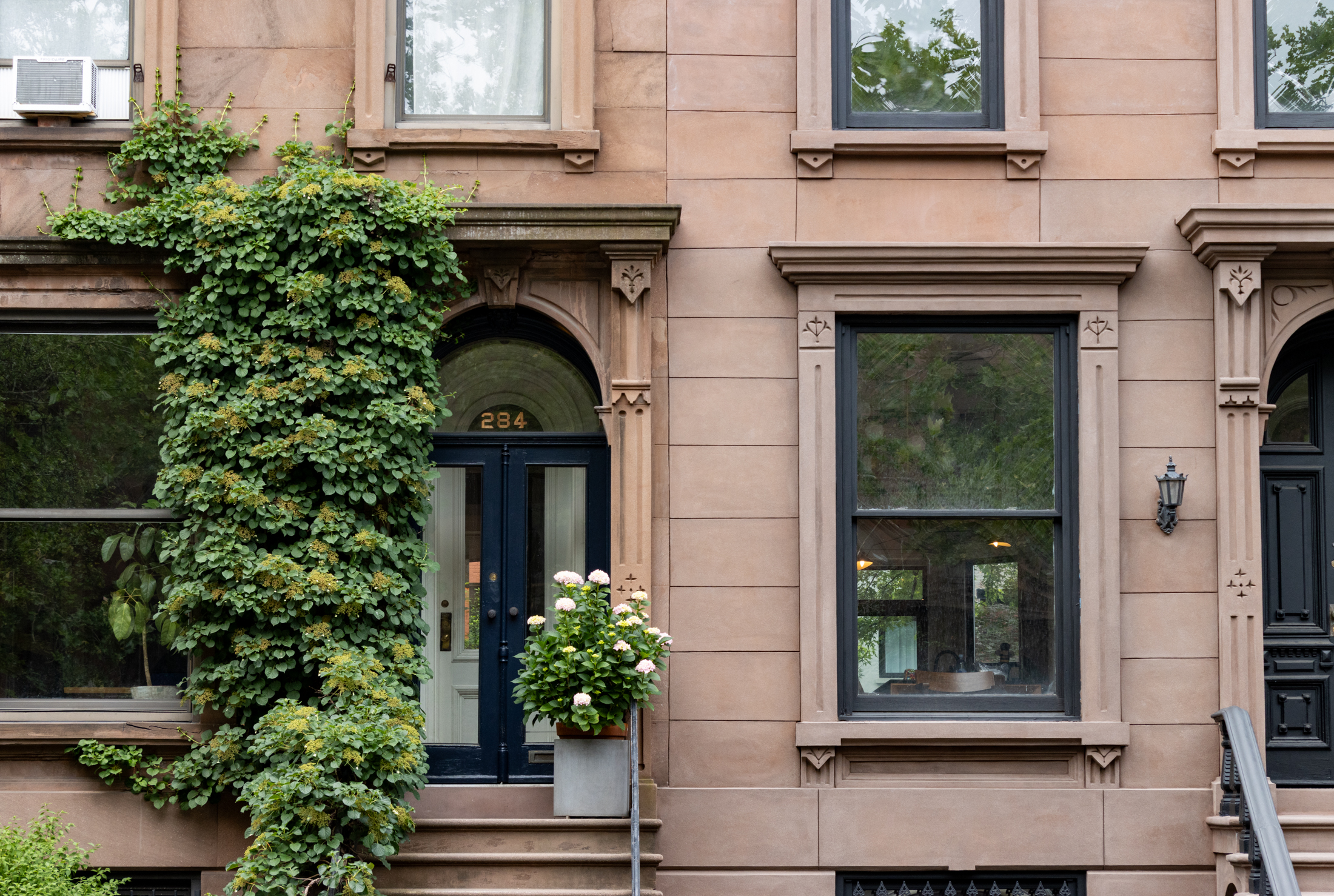Building of the Day: 183-187 Lafayette Avenue
Brooklyn, one building at a time. Name: Wood framed row houses Address: 183-187 Lafayette Avenue Cross Streets: Adelphi Street and Clermont Avenue Neighborhood: Fort Greene Year Built: 1857 Architectural Style: Vernacular Italianate Architect: Unknown Landmarked: Yes, part of Fort Greene HD (1980) The story: Here’s a story to warm the hearts of all old house…


Brooklyn, one building at a time.
Name: Wood framed row houses
Address: 183-187 Lafayette Avenue
Cross Streets: Adelphi Street and Clermont Avenue
Neighborhood: Fort Greene
Year Built: 1857
Architectural Style: Vernacular Italianate
Architect: Unknown
Landmarked: Yes, part of Fort Greene HD (1980)
The story: Here’s a story to warm the hearts of all old house lovers. These houses are better than they were when the area was landmarked. In the mid-1970s, when Fort Greene was being surveyed for landmarking, these three houses looked very different. The houses were built in 1857, when Fort Greene was in the beginning decade of its rapid pre-Civil War development. The nearby Navy Yard was growing, and providing employment, industry was developing in Wallabout, and Fort Greene was becoming the next new middle class neighborhood, as people followed improving public transportation eastward, away from Brooklyn Heights.
Today, busy Flatbush Avenue, the Manhattan Bridge, public housing, and a built up Downtown Brooklyn physically separate that part of Brooklyn from Fort Greene. But if you can imagine that none of that was there, it wasn’t hard for builders and developers to simply continue the housing already downtown and in Vinegar Hill up into Fort Greene, connecting it to the rest of the growing City of Brooklyn. There was also Washington Park.
Washington Park became Brooklyn’s first city park in 1850. The land, which city fathers thought no one would want anyway, was a rocky hill, the site of Fort Washington, a now derelict Revolutionary War fort. The land had been reserved since the 1840s, and with the help of advocates like Walt Whitman, the park was established. The monument and park layout we know today wasn’t created until 50 years later.
By 1857, when these houses were built, Brooklyn’s developers were out in full force. They built houses across the Fort Greene neighborhood, in brick, brownstone and wood. Most of them were designed by the builders who constructed them, who were sometimes the developers as well. They worked from style and pattern books written by such eminent architects as Minard Lefever and others, and from experience. They often added their own personal embellishments and basically made it work. Their results are some of the most charming and long lasting houses in Brooklyn. Their work helps make this neighborhood unique and very different from Clinton Hill and Brooklyn Heights, or the remains of Vinegar Hill.
Lafayette Avenue quickly emerged as one of Fort Greene’s more important streets, with important east-west access. It would develop as a street where churches, schools and stores mixed with homes. This group of wood-framed houses was built for developer Baldwin C. Reeve. He built them for the growing middle class population that was part of Brooklyn’s rapid growth. He sold number 185 to a shipwright named Peter McPherson, a perfect example of the target market.
Fast forward to the 1970s. Fort Greene had suffered, as did every neighborhood in the city, from the decline in money and services in Brooklyn. Much of its housing stock was run-down, and the neighborhood was burdened by joblessness, crime and neglect. In spite of this, the neighborhood was struggling to hold on and improve. Landmarking was a part of that improvement. There was just too much good architecture here that could help spur a renaissance. This group, however, was a mess.
According to the LPC designation report, in 1977, number 187 was abandoned and boarded up, which can be seen in the Municipal Archives photo. 183 and 185 were covered in vinyl siding, and their window frames and doorways were gone. Although 187 was boarded up, it had the most original detail left, including original shingle siding, stoop, framed doorway hood with all of its ornamental goodies, upper story window frames and original cornice. 183 and 185 still had their original bay windows and cornices.
What a change today! I couldn’t find definitive proof, but it looks as if the houses got a major upgrade somewhere around 2000. New shingles, restored bays, doorways and windows, and repair to the cornices and porches. This group now looks better than ever. I used to be a vendor at the Brooklyn Flea when it first opened, and I always enjoyed seeing these houses every week. I even parked in front of them once. They reminded me of why I loved old houses, and also how valuable renovation and restoration are to a community. We’ve got great housing stock, and great streetscapes, and these houses are a visual joy. GMAP
(Photograph:Christopher Bride for Property Shark)









What's Your Take? Leave a Comment